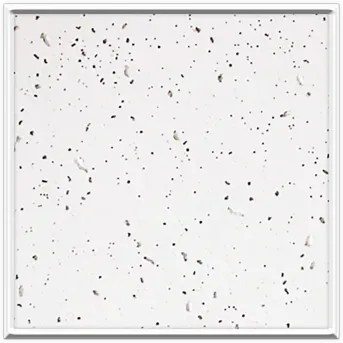Dec . 09, 2024 22:36 Back to list
Comparison of Mineral Fibre Ceiling Panels and Gypsum Board Options for Interior Design
Mineral Fibre Board Ceiling vs. Gypsum Board A Comprehensive Comparison
When it comes to selecting materials for ceiling applications, two popular choices emerge mineral fibre board ceilings and gypsum boards. Each of these materials offers unique advantages, disadvantages, and aesthetic qualities that cater to different building requirements, design preferences, and budget constraints. This article delves into the characteristics, benefits, and drawbacks of both mineral fibre board ceilings and gypsum boards to help you make an informed decision for your next project.
Overview of the Materials
Mineral Fibre Board Mineral fibre boards are typically composed of a mixture of natural and synthetic fibers, including glass and mineral fibers. These boards are primarily manufactured to provide excellent acoustic properties, insulation, and fire resistance. They come in various finishes, colors, and surface textures, allowing for versatility in design.
Gypsum Board Also known as drywall or plasterboard, gypsum board consists of a layer of gypsum plaster sandwiched between two layers of thick paper. Gypsum board is favored for its ease of installation, cost-effectiveness, and smooth surface finish, making it ideal for painting and wallpapering.
Acoustic Properties
One of the key considerations when evaluating ceiling materials is their acoustic performance. Mineral fibre boards excel in this area due to their porous structure, which effectively absorbs sound. This characteristic makes them particularly suitable for commercial spaces such as offices, schools, and hospitals, where noise reduction is a priority.
Gypsum boards also provide a moderate level of sound insulation, but they do not reach the acoustic performance of mineral fibre boards. While they can be enhanced with additional layers or soundproofing materials, they are generally better suited for environments where noise is not a significant concern.
Fire Resistance
Fire safety regulations play a crucial role in material selection, especially in commercial and multi-family residential buildings. Mineral fibre boards possess excellent fire-resistant properties due to their mineral composition. They have a high melting point and do not emit toxic gases when exposed to fire.
Gypsum board is also known for its fire-resistant characteristics since gypsum contains water molecules that help slow down the spread of flames. Standard gypsum board has a fire rating, but specialized fire-rated gypsum boards are available for more stringent fire safety requirements. Both materials demonstrate commendable fire resistance; however, mineral fibre boards may have the edge in environments where fire safety is critical.
mineral fibre board ceiling vs gypsum board

Aesthetic Flexibility
Aesthetics is another crucial factor in ceiling material selection. Mineral fibre boards come with a range of design options, including various textures, patterns, and colors, enabling architects and designers to achieve the desired look without compromising on performance. The ability to incorporate different designs can contribute significantly to a space's overall ambiance.
Gypsum boards offer a smooth finish that is perfect for seamless painting and decorating, making them suitable for residential applications. Furthermore, they can be easily molded into various shapes to create custom arches, recesses, or alcoves, providing flexibility in design.
Cost Consideration
Cost is often a determining factor in material selection. Generally, gypsum boards are more affordable than mineral fibre boards, making them a popular choice for many residential projects. They are relatively easy to install, which can save on labor costs as well.
Mineral fibre boards tend to be more expensive due to their specialized manufacturing process and superior acoustic and fire-resistant properties. However, for commercial settings where performance is paramount, the investment may be justified.
Installation and Maintenance
Both materials have straightforward installation processes, but gypsum boards are often considered easier to handle and install, particularly for DIY projects. Gypsum boards can be cut with standard tools, making them accessible for many builders.
Mineral fibre boards, on the other hand, usually require a suspended ceiling grid system, which can add complexity to the installation process. However, both materials are relatively low maintenance, with periodic cleaning being the primary requirement to maintain their appearance.
Conclusion
In conclusion, choosing between mineral fibre board ceilings and gypsum boards depends on various factors, including the specific needs of the project, budget considerations, design preferences, and acoustic requirements. Mineral fibre boards are ideal for environments where sound dampening and fire resistance are critical, while gypsum boards offer a cost-effective and aesthetically pleasing option for residential spaces. Ultimately, understanding the strengths and weaknesses of each material will empower you to make an informed decision that best suits your needs.
-
Quality Ceiling Trap Doors & Access Panels | Easy & Secure AccessNewsAug.30,2025
-
Durable Ceiling T Grid Systems | Easy InstallationNewsAug.29,2025
-
PVC Gypsum Ceiling: Durable, Laminated Tiles for Modern SpacesNewsAug.28,2025
-
Pvc Gypsum Ceiling Is DurableNewsAug.21,2025
-
Mineral Fiber Board Is DurableNewsAug.21,2025
-
Ceiling Tile Clip Reusable DesignNewsAug.21,2025







